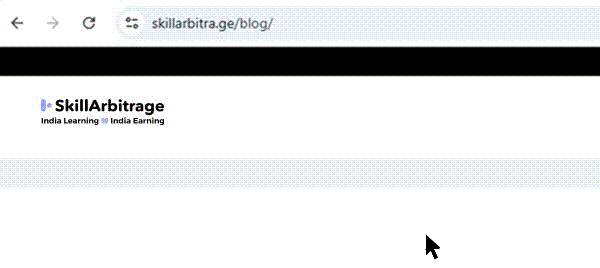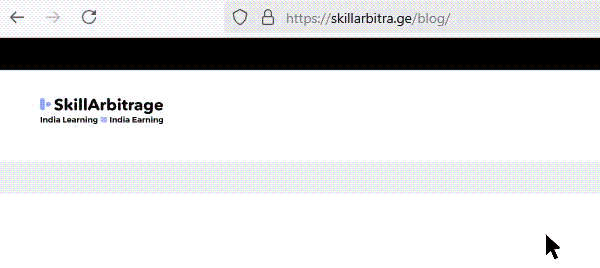This article is for Indian freelancers who struggle to land high-paying US clients despite having strong skills. You will learn the single most common mistake that makes American businesses overlook you and the one-word change that instantly makes you the obvious choice. By the end, you will know how to position yourself in a way that feels natural to US buyers, eliminating hesitation and making hiring you a no-brainer.
Table of Contents
Previously on This B2B Copy…
Raghunandan had one shot to stand out in B2B. If his copy didn’t inspire confidence, clients would go with AI or cheaper freelancers.
With the pressure on, he mastered a survival-driven copy trick—one that made high-value clients see him as the safest, smartest choice.
But great copy is only half the battle.
Writing for B2B is one thing. Getting B2B clients to choose you is another.
Now, Raghunandan faces a bigger challenge: How do you make US clients pick you first before anyone else?
As global competition rises, the difference between getting ignored and getting hired comes down to a one-word fix.
(Continued…)
Why most Indian freelancers get ignored
Raghunandan had spent weeks on his website. The typography was sleek. The color palette? Carefully chosen. The copy?
“I am a marketing consultant. I help businesses grow.”
Swathi stared at the screen. Then she blinked. Then she blinked again, as if she was trying to wipe the stupidity off her vision.
“You ‘help businesses grow’? Incredible,” she said, her voice flat. “That’s like saying you enjoy breathing oxygen. Tell me, do you also like eating food and drinking water?”
Raghunandan frowned. “What’s wrong with it?”
Parvathishankar scrolled down, his expression unreadable. “Let me guess. You also ‘leverage cutting-edge strategies’ and ‘drive measurable results’?”
Swathi sighed. “Bro, this is the most generic, lifeless, ‘hire me, please’ freelancer fluff I’ve ever seen. It’s the positioning equivalent of an empty calorie diet. No US client will hire you.”
Raghunandan crossed his arms. “It’s a solid description. It shows I have experience.”
Parvathishankar shook his head. “No, it shows you’ve mastered the art of saying nothing while using many words.”
Swathi turned to Raghunandan, dead serious. “US clients don’t care about you. They care about what you can do for them. Right now, you sound like a random guy holding up a sign that says ‘I do marketing.’”
Raghunandan looked at the screen. He had to admit, they had a point.
Parvathishankar continued, “Most freelancers introduce themselves like they’re applying for a job. They list adjectives. They talk about their passion. They proudly announce, “I am a [job title].”
“And clients? They tune out.” Swathi spoke from her own experience of getting pitches for her own brand, Tantra.
“Because clients don’t hire job titles. They hire specific solutions to specific problems.” Parvathishankar added.
“You know what this site sounds like?” Swathi asked, “It sounds like ChatGPT’s first draft.”
Parvathishankar let out a short laugh. “No, ChatGPT would at least ask for more details.”
Raghunandan sighed. “Okay, okay. So what do I do?”
Parvathishankar leaned in.
“You stop saying ‘I am’ and start saying ‘I do.’”
The smallest fix: Shift from “I am” to “I do”
Raghunandan leaned back, arms crossed. “So you’re saying the words ‘I am’ are ruining my career?”
Parvathishankar nodded. “Pretty much.”
Swathi smirked. “Bro, you sound like a LinkedIn influencer trapped in 2015. ‘Marketing consultant helping businesses grow’? Wow. Groundbreaking. If I had a dollar for every freelancer who said that, I’d be paying someone else to write this roast.”
Raghunandan groaned. “Fine. So what do I say instead?”
Parvathishankar grabbed a marker and scribbled on the whiteboard:
“I help [specific client] achieve [valuable outcome] with [your skill].”
“That,” he said, “is what gets you hired.”
From vague to valuable
Let’s put this formula to work.
Bad positioning:
“I am a graphic designer.”
Good positioning:
“I design LinkedIn carousels that get B2B founders 3x more engagement.”
Bad positioning:
“I am a copywriter.”
Good positioning:
“I write landing pages that double conversions for e-commerce brands.”
Swathi snapped her fingers. “See the difference? The first one is a résumé bullet point. The second one is a revenue-generating machine.”
Raghunandan squinted at the whiteboard. “So… the secret is just being more specific?”
Parvathishankar nodded. “Specificity forces clarity. Clarity creates demand. The clearer you are, the more hireable you become.”
Swathi pointed at his laptop. “Change your website headline right now. Let’s see some magic.”
Raghunandan hesitated, fingers hovering over the keyboard. “Alright. I help… B2B brands… uh…”
Swathi sighed. “Jesus, do you even know what you do?”
Why this tiny change works
Swathi had to explain. “This isn’t just a writing trick. It’s about how clients think.”
i. Clients hire solutions, not labels.
“No one is searching for a generic ‘marketing consultant.’
But plenty of people are searching for “someone who gets more leads from LinkedIn ads.”
She was speaking of her own pain, looking for people on LinkedIn.
ii. Specificity makes you instantly more credible.
“Helping businesses grow” is vague.
“Helping B2B founders increase LinkedIn engagement” sounds like you’ve done it before.”
Parvathishankar remembered his early days as a copywriter and shared his experience.
iii. The richer the detail, the higher the perceived value.
“Generalists compete on price. Specialists compete on expertise.
Clients don’t ask niche experts for discounts. They just ask when they can start.”
Parvathishankar tapped the screen. “The more specific you get, the better you position yourself.”
Swathi added to it. “Because positioning is specificity. And specificity is niching.”
Raghunandan nodded slowly. “So, I’ve been making this harder than it needs to be.”
Specificity: The 1-word solution you need
Raghunandan leaned back in his chair, arms crossed. “So, you’re saying I need to be more specific. But doesn’t that mean fewer clients? What if I cut out opportunities?”
Swathi let out a deep sigh, the kind reserved for someone explaining basic arithmetic to a grown man. “Right, because clients are just lining up at your door right now.”
Parvathishankar sat down in front of Raghunandan. “Let me ask you something. If your car breaks down, do you call ‘a guy who fixes things’ or a mechanic?”
“The mechanic, obviously,” Raghunandan muttered.
“Exactly,” Swathi said. “And when a SaaS startup needs better LinkedIn engagement, do they want ‘someone who does marketing’ or ‘someone who helps SaaS founders get 30% more demo calls through LinkedIn content’?”
General is forgettable. Specific is profitable.
Freelancers love keeping things broad. They think it gives them flexibility. In reality, it makes them invisible.
Consider these two approaches:
Option 1: “I do social media marketing.”
Option 2: “I help B2B founders turn LinkedIn into a lead-generation machine.”
Who sounds more valuable?
Parvathishankar leaned forward. “People don’t hire freelancers. They hire outcomes. The clearer you make that outcome, the easier it is for clients to say yes.”
Raghunandan frowned. “But what if I get too specific and cut myself off from work?”
Swathi shrugged. “Then you adjust. But right now, you don’t have a positioning problem. You have an invisibility problem.”
Why specialists get paid more than generalists
“Clarity isn’t about limiting yourself. It’s about making sure the right clients see you as the obvious choice.”
Look at these two:
Generalist: “I write blogs for any industry.”
Specialist: “I write long-form content that gets SaaS startups featured on Google’s first page.”
Who do you think charges higher rates?
Parvathishankar tapped the table. “When you define exactly what you do and who it’s for, you don’t just attract more clients. You attract better ones.”
Swathi knew this from bitter experience. “And the best part? You stop getting price-shopped. Because now, you’re not just another freelancer. You’re the person they need.”
The smallest fix: Get specific right now
i. Define who you help.
Think about past projects. Who got the best results from your work?
What industry do you naturally understand best?
ii. Clarify the outcome you deliver.
What’s the most valuable transformation your work creates?
How can you describe it in one sentence?
iii. Rewrite your profile, cold emails, and website.
Swap out vague, broad descriptions for something concrete.
Test how people respond. If they immediately “get it,” you’re on the right track.
Raghunandan sighed, staring at his website again. “Alright. Time to make this real.”
Parvathishankar grinned. “Good. Because until you get specific, you’re just another name in the pile.”
How to make clients see you as the only choice
Raghunandan had made some changes to his website. The fluff was gone. The generic “I help brands grow” nonsense had been replaced with something sharper. But something still felt off.
“It’s better, right?” he asked, spinning his laptop around to show Swathi and Parvathishankar.
Swathi took one look and groaned. “Oh no.”
Parvathishankar laughed. “I’ll give you this. You’ve moved from vague to slightly less vague.”
Raghunandan frowned. “What do you mean?”
Swathi leaned in. “Alright, genius, let’s play a game. Imagine you’re a SaaS founder looking for a LinkedIn consultant. You Google it, and five different people pop up. One says, ‘I help SaaS brands with LinkedIn marketing.’ Another says, ‘I help Series A SaaS startups turn LinkedIn into a 24/7 demo-generating machine.’”
She paused. “Who do you call first?”
Raghunandan exhaled. “The second one.”
“Why?” Parvathishankar asked.
“Because they know exactly who they help and what they do.”
Swathi pointed at his screen. “And yet here you are, calling yourself a B2B messaging expert who helps companies stand out.’ Stand out how? To whom?”
How the right words turn you into the obvious pick
“Most freelancers assume their job is to list skills. Clients don’t care about skills. They care about outcomes.” Swathi continued.
Compare these two introductions:
Weak: “I’m a content strategist.”
Strong: “I turn startup founders into industry authorities with long-form LinkedIn content.”
One is a job title. The other is a magnet for the right client.
“The more precise you are, the less convincing you have to do,” Parvathishankar added.
Why general labels make you invisible
“Think of it like a crowded room. If you yell, “Hey, everyone!”, nobody turns around. But if you shout, “Hey, Series A SaaS founders who want more demo calls!” the right people look up.” Parvathishankar took up the instruction.
Being clear about who you serve doesn’t push clients away. It makes the right ones come running.” Swathi banged the table. “This is why the best freelancers don’t chase clients. They make themselves impossible to ignore.”
Fix this today: Make your introduction a no-brainer
Raghunandan sighed. “So I need to be even more specific?”
Parvathishankar nodded. “Laser-sharp. Your website, your LinkedIn, your cold emails, everything should tell a client, in five seconds, ‘this is exactly who I need.’”
Swathi pulled up a blank document. “Let’s fix this right now.”
1. Whom do you help? (Be exact: industry, business size, growth stage)
2. What’s the clear outcome you deliver? (More sales? More traffic? Faster workflows?)
3. How do you do it? (Your unique method, platform, or expertise)
Raghunandan hesitated. Then he started typing.
Parvathishankar grinned. “Now we’re getting somewhere.”
The psychology of specificity
Raghunandan stared at his screen. His new description was tighter, clearer but something still nagged at him.
“I get why this makes sense logically,” he said, rubbing his chin. “But why does it work so well? Why does just changing a few words make such a huge difference?”
Parvathishankar grinned. “Because the human brain is lazy.”
Swathi laughed. “And clients are even lazier.”
The science of why specific people get hired faster
Parvathishankar leaned back in his chair. “People don’t like making hard decisions. If you make them think too much about what you do or whether you’re the right fit, they’ll move on.”
Swathi nodded. “Exactly. Vague freelancers make clients do the work. Specific freelancers remove all the work.”
She pulled up two job posts on her phone.
1. Need help with marketing. Looking for someone with experience in growing brands.
2. Looking for a LinkedIn consultant who has helped Series A SaaS startups increase demo calls by at least 30%.
“Which one makes hiring easy?” she asked.
Raghunandan sighed. “The second one.”
Parvathishankar pointed at his screen. “So why are you making your website sound like the first one?”
Why vague freelancers lose to specific ones
Specificity works for three reasons:
1. The brain loves clarity. Clients skim. They make snap judgments. If they have to ‘decode’ what you do, they’ll move on.
2. Experts feel trustworthy. Specialists get hired. Generalists get price-shopped.
3. People want easy choices. If a client sees two options—one that’s crystal clear and one that’s generic. They’ll always pick the one that requires less thinking.
“Hiring a freelancer isn’t fun,” Swathi said. “Clients aren’t looking for the ‘best’ option. They’re looking for the least risky option.”
Parvathishankar grinned. “And the least risky option is always the one that says, ‘I’ve solved this exact problem before.’”
The simple test: Would a client say, ‘That’s me’?
Raghunandan sighed. “So if a client reads my website and doesn’t instantly think, ‘That’s exactly what I need,’ I’ve failed?”
Swathi clapped. “He’s learning!”
Parvathishankar nodded. “If a SaaS founder struggling with LinkedIn reads your page and doesn’t immediately feel like you’re the guy who fixes that, you’ve lost them.”
Swathi pulled up a website on her phone. “Look at this: ‘I help B2B founders turn LinkedIn into their #1 inbound sales channel.’ If you’re a B2B founder who wants inbound sales from LinkedIn, are you reaching out?”
Raghunandan nodded. “Of course.”
“See?” Parvathishankar said. “This is why specificity isn’t just a detail. It’s the difference between getting hired and getting ignored.”
Raghunandan exhaled. “Alright. Time to rewrite everything.”
Swathi grinned. “Now you’re thinking like someone who actually wants clients.”
Fixing your profile, website, and pitches today
Raghunandan cracked his knuckles. “Alright, I’m ready. What’s the next step?”
Swathi smirked. “We take a sledgehammer to your website.”
Parvathishankar nodded. “And your LinkedIn. And your pitches. Basically, anything that has words on it.”
Raghunandan braced himself.
Step 1: Rewrite your website in one sentence
“First things first,” Parvathishankar said, “your homepage should tell me exactly what you do in ten words or less.”
Swathi leaned in. “Right now, it says, ‘I help businesses grow through strategic marketing solutions.’” She rolled her eyes. “So does every other marketer on the planet.”
Raghunandan sighed. “Okay, fine. What should it say?”
Parvathishankar pointed at the screen. “Try this: ‘I help B2B SaaS startups turn LinkedIn into a demo-booking machine.’”
Raghunandan stared at it. “That’s actually good.”
Swathi smirked. “Because it’s clear. When a SaaS founder reads that, they immediately know if they need you.”
Step 2: Fix your LinkedIn bio in 30 seconds
Parvathishankar pulled up Raghunandan’s LinkedIn. “This says, ‘Helping brands scale with innovative marketing strategies.’”
Swathi sighed. “Oh wow, an innovative marketer. Never seen one of those before.”
Raghunandan groaned. “Okay, okay. What’s the fix?”
Parvathishankar typed something out.
Old:
“Helping brands scale with innovative marketing strategies.”
New:
“I help SaaS founders book 30% more demos using LinkedIn content.”
Raghunandan read it. “That’s… really specific.”
Parvathishankar nodded. “That’s the point.”
Step 3: Make your cold pitch a no-brainer
Swathi folded her arms. “Your cold emails. Do they start with ‘I’m a marketing consultant with experience in…’?”
Raghunandan hesitated. “…Maybe.”
Parvathishankar shook his head. “Wrong. Clients don’t care about introductions. They care about results.”
He typed out a new version of a pitch:
Old:
“Hi, my name is Raghunandan, and I’m a marketing consultant who helps businesses scale. I’ve worked with various brands to improve their online presence. I’d love to connect and explore opportunities.”
New:
“Hi [Client’s Name], I saw your LinkedIn post about struggling to get inbound leads. I helped [SaaS Startup] increase their demo calls by 30% in three months using LinkedIn content. I would love to show you how we can do the same for you. Can we chat this week?”
Raghunandan read it twice. “That’s just better.”
Swathi nodded. “Because it gets straight to the value. No fluff, no self-intro, just proof that you can solve their problem.”
Step 4: Test and iterate
Parvathishankar leaned back. “Now, update your profiles and start sending pitches. Track what works. Tweak as you go.”
Swathi grinned. “And if you ever feel the urge to write ‘I help brands grow’ again, stop yourself.”
Raghunandan sighed. “Noted.”
The smallest fix, the biggest impact
A week later, Raghunandan sat across from Swathi and Parvathishankar at their usual café. He looked different, more confident, almost smug.
Swathi raised an eyebrow. “You’re looking very pleased with yourself. Did you finally stop writing LinkedIn posts about ‘helping brands achieve their goals’?”
Raghunandan grinned. “You’re going to love this. I updated my LinkedIn, changed my website, and sent ten cold emails.”
Parvathishankar leaned in. “And?”
Raghunandan pulled out his phone. “Five responses. Three meetings booked. And one founder literally said, ‘You’re exactly what I was looking for.’”
Swathi whistled. “Wow. Turns out, specificity works. Who would’ve thought?”
Parvathishankar took a sip of his coffee. “Let’s break this down. You didn’t learn a new skill. You didn’t build a new portfolio. All you did was describe what you already do in a way that makes sense to the right people.”
Swathi nodded. “Most freelancers think they have a talent problem or a competition problem. They don’t. They have a clarity problem.”
Raghunandan leaned back. “I always thought getting high-paying clients meant proving I was the best at my craft. But now I see it’s about making sure the right people instantly recognize that I can solve their problem.”
Parvathishankar pointed at him. “Exactly. If a client has to guess what you do, they’re never hiring you. The clearer you are, the more valuable you become.”
Swathi tapped the table. “So, let’s make sure this lesson sticks.”
Parvathishankar held up a finger. “First, stop introducing yourself with job titles. Start with what you do and who you do it for.”
Swathi held up a second. “Second, be concrete. No vague promises about ‘growth’ or ‘brand success.’ Say exactly what result you deliver.”
Parvathishankar added a third. “And third, remember, specificity isn’t a tweak. It’s a complete shift in how you position yourself. The more specific you get, the more you own your space.”
Raghunandan smiled. “Noted. No more fluff.”
Swathi grinned. “Good. Now, if I ever catch you saying ‘I help brands scale’ again, I’m sending your cold emails to spam myself.”
Raghunandan laughed. “Fair enough.”
Parvathishankar raised his coffee cup. “To never being vague again.”
(To be continued…)

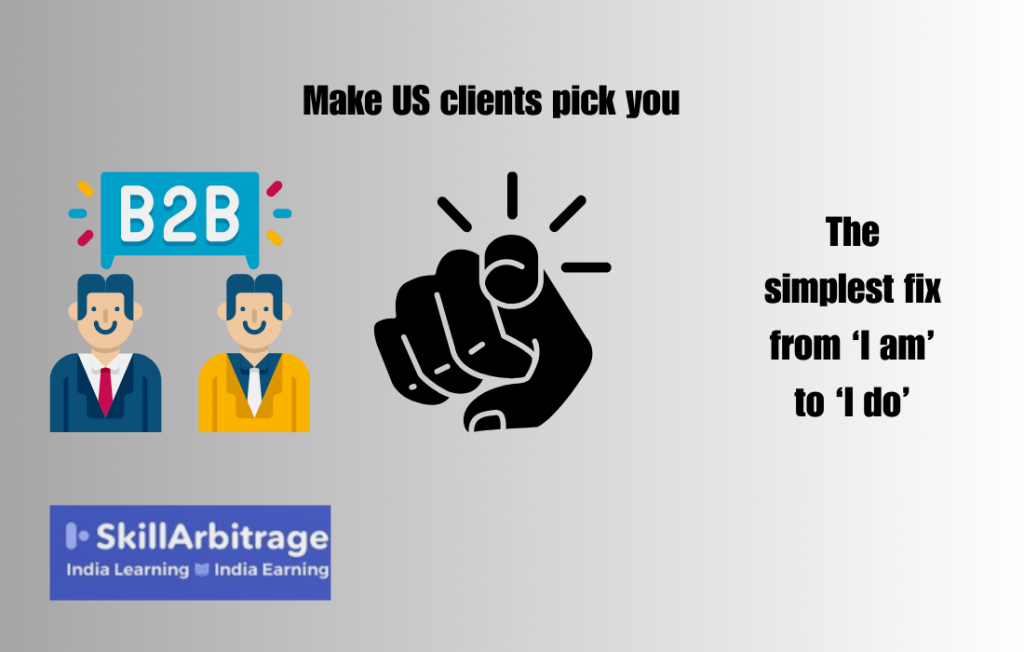

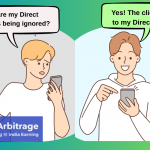
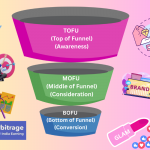


 Allow notifications
Allow notifications